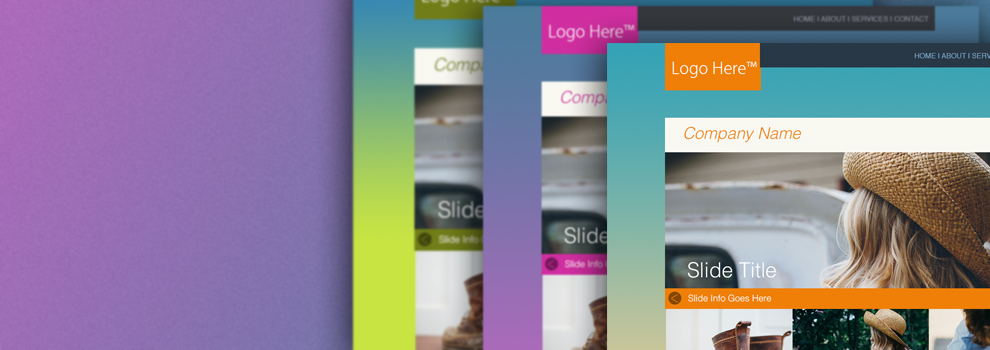Tempted to Template?
What you are paying for with a templated site.
IdeaBank has been developing websites for nearly 20 years. In that time we have seen a sea change of how websites are built and handled. Also in that time, we have maintained a policy to not use prebuilt website templates.
With an origin in print design and marketing, we went into web development feeling a website needs to reflect the design and feeling of the company it represents. Website templates can be a quick and easy way to have a website, but they fall short of reflecting a brand.
Websites using WordPress, Joomla! or any other mainstream content management system can be built without any real effort utilizing pre-built designs. In essence, these templates are a disconnect from actual design and development. The template is just applied to the site, plugins are added, and a logo is inserted in the appropriate placeholder. The person who put the site together may have little to no understanding of how the site actually works, or what to do when it goes wrong.
Hazards of using templates
Templates themselves have been used by many production houses to reduce overhead and push websites out quickly. Unfortunately, this quick fix to actual work can lead to some huge issues down the line.
SEO
Templates themselves are not optimized to increase the search engine ranking of your site. They are designed to meet a specific function or style, and do not benefit from ranking higher in search. If a template is seen abundantly, it reduces the value or uniqueness of that template for the company who sells it.
We often see templated sites with incorrect header structures, improperly named images, and strange page errors. All of these things affect how your site ranks.
Broadcast Vulnerabilities
Mainstream content management systems are often the target of attack. As these systems age, new flaws and vulnerabilities surface. If you are not constantly keeping your system up-to-date you can become compromised or attacked as those issues arise.
One common method to prevent instantaneous attacks when a vulnerability is discovered is to hide what system you are using. However, templates often are built for a specific system, and have dates written within them. It doesn't take very long for a hacker to determine what system you are using based on the template used, and the date it was implemented.
Inflexible
One of the biggest issues with templates is their lack of flexibility. Templates are generally designed to solve one solution, and work one way. If you later want to add functionality or expand the capability of the site, you are stuck. This can lead to huge development fees in the long run for minor changes.
What are you paying for?
The question I always ask when I see a new templated site is, "What did they pay for?" Very often templates are cheap, dirt cheap, and placed on free content management systems. If you are spending a large amount of money to have a site developed for you, but the template was cheap and the system it was built in was free... what did you just pay for?
IdeaBank designs every site from scratch. We start with a blank canvas and a conversation. We examine your needs and capabilities, and create a site that works for you. We don't use plugins you have to work around to get what you want; we custom-tailor what you want from the start.
Our websites are flexible, secure, built for SEO, and made fresh every time. Is yours?
